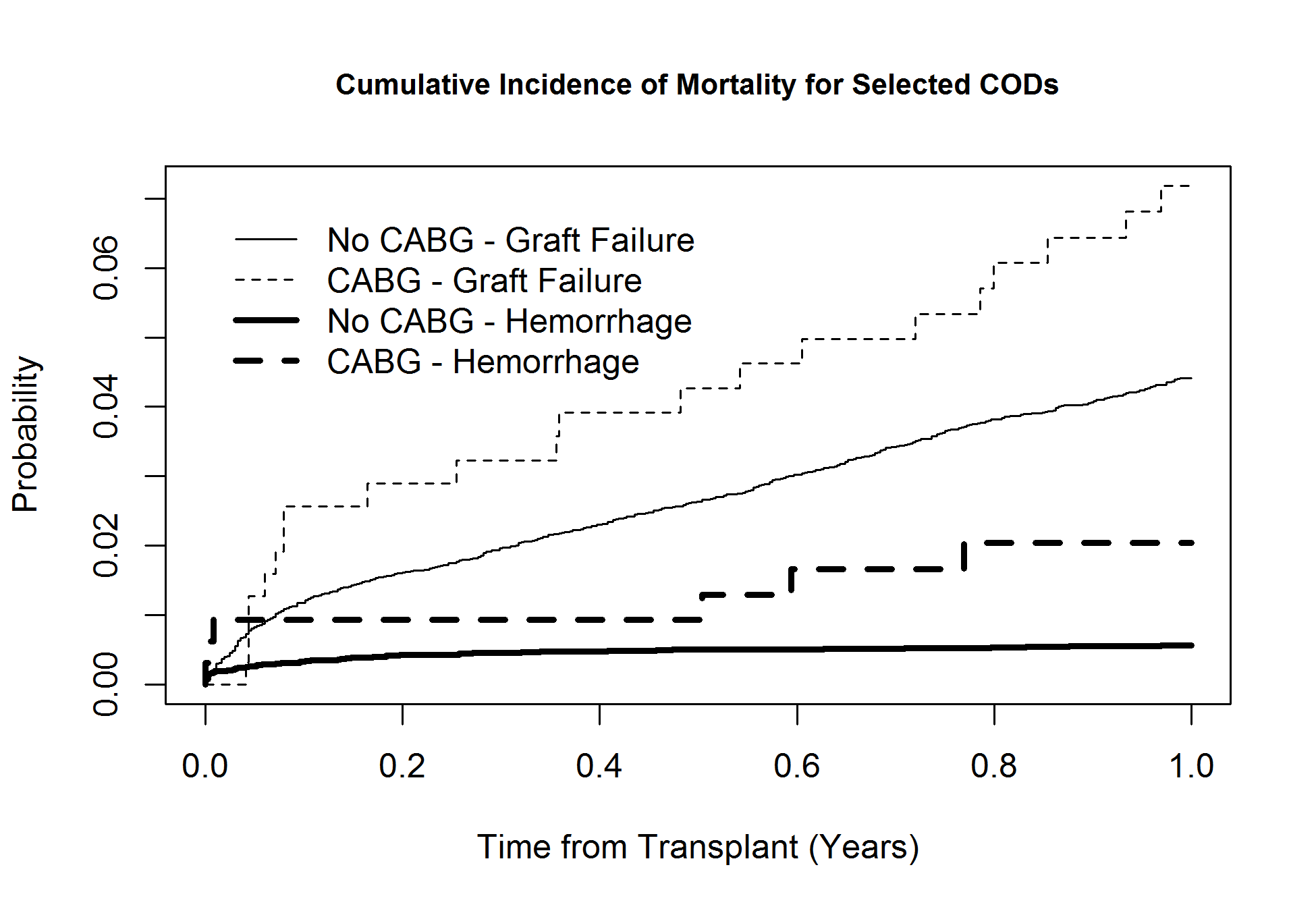Lung Transplant Outcomes after CABG
1Surgery, University of Minnesota, Minneapolis, MN, 2Surgery, Fairview Health Services, Minneapolis, MN
Meeting: 2019 American Transplant Congress
Abstract number: 189
Keywords: Graft survival, Heart failure, Lung, Lung transplantation
Session Information
Session Name: Concurrent Session: Setting the Table for Success after Lung Transplantation
Session Type: Concurrent Session
Date: Sunday, June 2, 2019
Session Time: 4:30pm-6:00pm
 Presentation Time: 4:54pm-5:06pm
Presentation Time: 4:54pm-5:06pm
Location: Room 206
*Purpose: Prior coronary artery bypass grafting (CABG) has been a contraindication to lung transplantation (LTx) due to increased mortality associated with bilateral lung transplant. We hypothesize that causes of death are different for LTx patients with prior CABG, compared to those without prior CABG.
*Methods: We used the Scientific Registry of Transplant Recipients (SRTR) to define the survival and causes of death of LTx patients with prior CABG (325) vs. no prior cardiac surgery (13,768) transplanted between 6/30/2004 and 12/31/2015. We included all LTx recipients older than 45 years and excluded patients with re-transplants, simultaneous transplants, or other previous cardiac surgery and those whose status could not be assessed. Categorical variables were compared with Chi-square tests, and continuous variables with Wilcoxon tests in R ver.3.4.3. Outcomes were cumulative incidence of overall mortality in CABG vs. Non CABG as well as mortality due to specific causes.
*Results: The study cohort included 14,093 patients, 325 of which had previously undergone CABG (left, n= 76; right, n= 198; bilateral, n= 51). The CABG group was older (median 65 y vs. 61 y, p<0.001), more male, had a greater proportion of interstitial pulmonary fibrosis, and higher creatinine than Non CABG patients. The cumulative incidence of all-cause mortality at one year was 23% for prior CABG and 14% for others. We identified major causes of death (COD) in the first year post-transplant in CABG vs. Non CABG recipients. COD were grouped into six categories: BOS/graft failure/pulmonary, Infection, Cardiovascular/cerebrovascular (CV), Hemorrhage, Malignancy, and Other. The cumulative incidence of mortality at one year due to graft failure was 7% for CABG vs. 4.5% for others (overall log-rank p=0.024). There was no statistically significant increased risk of death from CV causes. Risk of death from hemorrhage was 2% for CABG vs. 0.5% for Non CABG (overall log-rank p=0.001).
*Conclusions: Lung transplant patients with history of CABG are at increased risk of death due to graft failure at one-year post transplant and at risk of early death from hemorrhage after transplant. There is no significant difference in mortality due to cardio/cerebrovascular causes between two groups.
To cite this abstract in AMA style:
Huddleston S, Aggarwal R, Jackson S, Lemke N. Lung Transplant Outcomes after CABG [abstract]. Am J Transplant. 2019; 19 (suppl 3). https://atcmeetingabstracts.com/abstract/lung-transplant-outcomes-after-cabg/. Accessed December 21, 2025.« Back to 2019 American Transplant Congress


